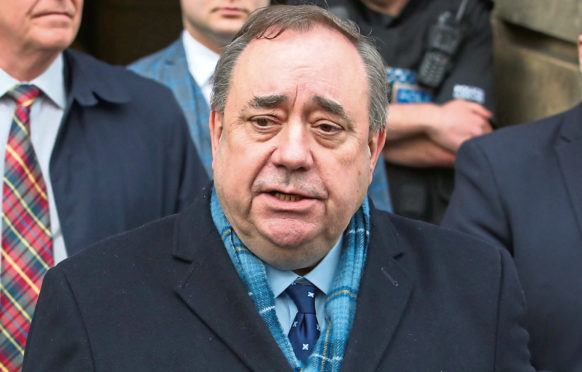
With almost a quarter of Nicola Sturgeon’s MSPs, including four current Cabinet Secretaries, four former ministers and a deputy presiding officer, all to stand down at the next election, you wouldn’t be blamed for suspecting something was up within the SNP.
But with Sturgeon’s popularity in ascendancy, independence within sniffing distance and the party predicted to win another majority at the next election, the question of why so many long-standing SNP MSPs are opting to quit at such a pivotal time is exercising minds. And no wonder. For while the party Pollyannas can focus on current polling, there are others looking to the coming months with grim uncertainty if not despair.
At the turn of this year, the accepted wisdom in the political bubble was that Alex Salmond, charged with 13 serious charges of sexual assault including attempted rape, might, depending on the jury’s deliberations, end up in jail and that his successor as First Minister could potentially see her career falter too.
But everything changed in March when Salmond was cleared. He walked out of Edinburgh High Court a free man and straight into a Scotland going into lockdown.
It wasn’t just relief that he projected that day, but also a real sense of the solemnity that the pandemic deserved and of what was to come. He thanked his supporters but said the ordeal of his arrest and trial was nothing compared to the “nightmare” we were all living through.
But added: “There is certain evidence I would have liked to have seen led in this trial but for a variety of reasons we were not able to do so. Those facts will see the light, but it won’t be this day.”
And with that hint of bombshell, he returned home to self-isolate where he has remained uncharacteristically silent. Now, with the parliamentary enquiry into the Scottish Government’s mishandling of sexual harassment claims against him under way and the investigation into whether the current First Minister broke the ministerial code relating to the allegations still to begin, it seems the end of the trial was just the beginning of the travails.
All this before one examines the fault lines emerging among the membership over the proposed gender recognition reform, the hate crime bill, and the decision by the party’s National Executive Committee to effectively bar its own MPs – essentially one particular MP – from standing at the next Holyrood election unless they stand down from Westminster first.
It’s no exaggeration to say that some SNP supporters are not as bullish as the polls would suggest they should be and instead are a little fearful for what faces their party in the months ahead. And just when Sturgeon needs wise heads with institutional memory and a loyalty rooted in the journey, the veterans are leaving.
No doubt, those leaving have made personal choices about why they want out. And it is true it is true that the vast majority will be well past retirement age by the end of the next parliament.
But if independence is truly within reach, this exodus of experience, and the prospect of what motivates those that want in, does nothing to bolster confidence that this is a government preparing for it.

Enjoy the convenience of having The Sunday Post delivered as a digital ePaper straight to your smartphone, tablet or computer.
Subscribe for only £5.49 a month and enjoy all the benefits of the printed paper as a digital replica.
Subscribe